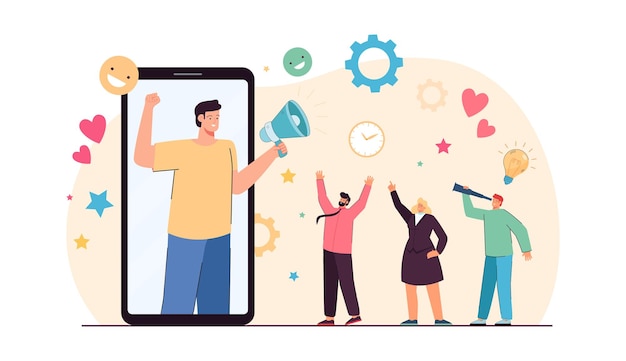The Psychology of Viral Trends
We live in a world where trends explode overnight, and just as quickly as they rise, they fade into obscurity. One minute, everyone’s doing the latest dance challenge or sharing the hottest meme, and the next, we’re all moving on to the next big thing. But why do we, as humans, get so caught up in these fleeting obsessions? What is it about viral trends that makes them so irresistible? Let’s dig deep into the psychology of why we just can’t seem to look away when the internet’s latest craze takes over.
What Makes Something Go Viral?
Before we dive into the psychological reasons behind our obsession with viral content, it’s important to understand what makes something "go viral." In simple terms, a trend, meme, or piece of content becomes viral when it spreads like wildfire across social media, blogs, and news outlets, often with little to no promotion. But there’s more to it than just luck. According to Jonah Berger, a marketing professor at the University of Pennsylvania and author of Contagious: How Things Catch On, viral content often follows a specific formula.
"Emotions are one of the key drivers of sharing," Berger explains. "Content that evokes high-arousal emotions, whether positive or negative, is much more likely to be shared than content that makes people feel neutral."
That’s right. The secret sauce behind virality often lies in the emotional response a piece of content triggers. But that’s just one piece of the puzzle.

The Role of Social Proof
Humans are social creatures, and we often look to others for cues on how to behave, especially online. This concept, known as "social proof," plays a huge role in why we’re so drawn to viral trends. Have you ever noticed how once a video gets a certain number of views or likes, it seems to snowball from there? That’s social proof in action.
When we see others engaging with a trend—whether it’s watching a video, sharing a meme, or participating in a hashtag challenge—it signals to us that this content is worth our time. In essence, social proof is our way of saying, "If everyone else is doing it, I should too."
The Dopamine Hit of Going Viral
We all know that feeling of excitement when our post gets more likes than usual or when a tweet gets retweeted by a big account. This little rush isn’t just in your head—it's a literal hit of dopamine, the feel-good chemical that our brain releases when we experience something pleasurable.
When it comes to viral trends, this dopamine effect can be even more intense. Not only do we get that instant gratification from participating in something popular, but the act of sharing or contributing to a trend taps into our deep-rooted desire for social approval. It feels good to be part of the "in" crowd, and going viral is like the ultimate badge of internet honor.
Emotional Triggers That Drive Virality
We’ve touched on emotions briefly, but let’s dive deeper into the kinds of emotions that are most likely to turn a piece of content into the next big thing. Viral content often hits on one or more of the following emotional triggers:
- Humor: Funny videos, memes, and parodies are among the most shareable content online. Whether it's a cat doing something ridiculous or a clever twist on a popular trend, humor has a universal appeal that transcends age, culture, and language.
- Awe: Inspirational stories, amazing feats, or jaw-dropping visuals often go viral because they evoke a sense of wonder. People love to share content that makes them feel inspired or amazed.
- Anger or Outrage: While it might seem counterintuitive, content that stirs up negative emotions can also go viral. People are quick to share articles, videos, or memes that highlight injustice, controversy, or something that angers them. This can be seen in how quickly political or social issues spread across platforms like Twitter and Facebook.
- Nostalgia: Throwback content, whether it's related to music, fashion, or pop culture, often taps into a sense of nostalgia that resonates deeply with certain demographics. When a trend reminds people of "the good old days," they’re more likely to engage with and share it.
Memes as Modern-Day Communication
We’ve all heard the saying, "A picture is worth a thousand words." In the digital age, memes are the new language of the internet. They’re funny, clever, and often say what words can’t express. But what makes memes so viral? The key lies in their relatability. Memes tap into universal experiences and emotions, allowing people from all walks of life to see a bit of themselves in the content.
When someone sees a meme that speaks to them, they’re not just laughing at the joke—they’re feeling understood. Memes have a unique ability to build community and foster connection, which is why they spread so rapidly.
The Impact of Algorithms on Virality
No conversation about viral trends would be complete without mentioning algorithms. Social media platforms like Instagram, TikTok, and YouTube all use complex algorithms to decide what content gets pushed to the top of our feeds. These algorithms are designed to prioritize content that’s already getting engagement, creating a feedback loop that makes viral content even more viral.
TikTok, in particular, has mastered the art of pushing viral content. The platform’s "For You" page is designed to showcase videos that align with your viewing habits, making it easier for users to discover the latest trends. This means that even if you’re not actively looking for the next big thing, TikTok’s algorithm will likely show it to you anyway.
Nostalgia in Internet Culture
We briefly mentioned nostalgia as an emotional trigger for viral content, but let’s explore why it’s so effective. Nostalgia taps into our desire to relive fond memories from the past, and it’s especially potent on the internet. Whether it’s a throwback photo, a meme referencing an old TV show, or a resurgence of a fashion trend from the 90s, people love to feel connected to their past.
In recent years, we’ve seen a rise in "throwback" trends that capitalize on this feeling of nostalgia. From the return of Y2K fashion to the resurgence of classic video games, nostalgia has become a powerful driver of viral content.
Memetic Evolution: How Trends Mutate
If there’s one thing that sets viral trends apart from traditional forms of media, it’s the way they evolve over time. A meme or trend often starts as a simple idea, but as it spreads, it mutates and evolves in ways the original creator never imagined. This process, known as "memetic evolution," is a key factor in why trends can stay relevant for longer than expected.
Take, for example, the viral meme "Distracted Boyfriend." What started as a single stock photo quickly became a canvas for internet creativity. People began creating their own versions of the meme, adding new captions and altering the image to fit different contexts. The result? A meme that’s still going strong years after it first went viral.
The Dark Side of Viral Trends
While viral trends can be fun and exciting, they’re not without their downsides. For one, the fast-paced nature of internet culture means that trends often burn out quickly, leaving little room for nuance or deeper discussion. What’s hot today is forgotten tomorrow, and in some cases, this can have serious consequences.
Take, for example, the "Tide Pod Challenge" that went viral a few years ago. What started as a harmless joke quickly spiraled out of control, with teenagers actually ingesting toxic laundry pods in an attempt to go viral. This is a stark reminder that not all viral trends are harmless, and the pressure to participate can sometimes lead to dangerous behavior.
Why We Keep Coming Back for More
So, why do we keep falling for viral trends, even when we know they’re fleeting? The answer lies in our inherent need for connection and belonging. Viral trends give us a way to feel part of something bigger than ourselves. They offer a sense of community, a shared experience, and, in some cases, a bit of escapism from the stresses of everyday life.
At the end of the day, viral trends tap into some of our most basic human desires: the need for validation, the craving for novelty, and the longing for connection. As long as these needs exist, there will always be a new viral trend waiting around the corner.
The Appeal of Instant Gratification
Just like the irresistible pull of viral trends, casino slots tap into our desire for instant gratification. When we share the latest meme or take part in a trending challenge, we're rewarded with likes, comments, and shares that provide an immediate sense of validation. In much the same way, playing a slot machine offers the chance for quick wins and instant excitement. Every spin brings the hope of landing that perfect combination, lighting up the screen with rewards. If you’re craving a fast-paced thrill, try spinning the reels on The Big Deal Deluxe slot, where every spin could be your next big win. Just as viral trends give you that quick boost of excitement, slot games deliver the same rush with the chance of even bigger rewards.
Conclusion
The psychology of viral trends is complex, but at its core, it’s driven by our emotions and our need to belong. Whether it’s the dopamine hit we get from a viral post or the nostalgia that tugs at our heartstrings, viral content is a powerful force in today’s digital landscape. And while trends come and go, one thing is certain: our obsession with the next big thing isn’t going away anytime soon.
Viral trends will continue to shape the way we interact with the internet, and understanding the psychology behind them helps us navigate this fast-paced world of ever-changing obsessions. So, the next time you see the latest meme or viral video, take a moment to appreciate the psychology at play—and maybe even share it with a friend.



